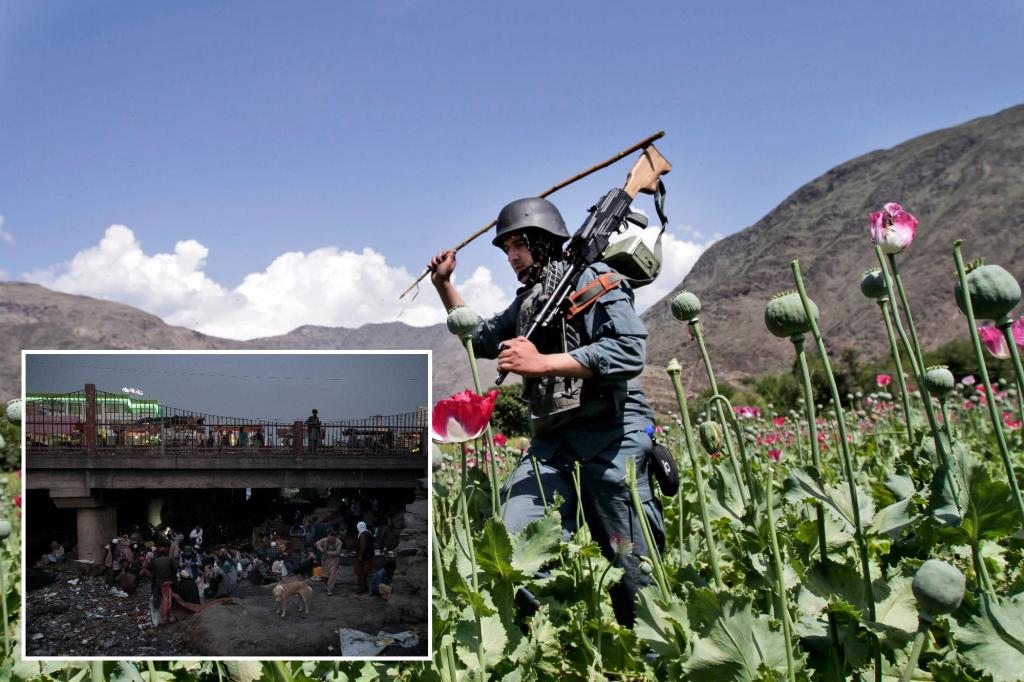ISLAMABAD (AP) – Afghanistan is the world’s fastest growing producer of methamphetamine, according to a report from the United Nations drug agency Sunday. The country is also a major producer of opium and source of heroin, although the Taliban declared a war on narcotics after they returned to power in August 2021.
The United Nations Office on Drugs and Crime, which published the report, said meth in Afghanistan is mostly made from substances that can be obtained legally or extracted from the ephedra plant, which grows in the wild.
The report cited Afghanistan’s meth manufacturing as a growing threat to national and regional health and security as it could disrupt the synthetic drug market and fuel addiction. It said drug seizures suspected of coming from Afghanistan had been reported from the European Union and east Africa.
Annual domestic meth seizures increased from less than 100 kilograms (220 pounds) in 2019 to nearly 2,700 kilograms (6,000 pounds) in 2021, suggesting increased production, the report said. But it cannot provide values for the country’s supply of meth, the quantity produced, nor its domestic use, because it has no data.
Angela Me, head of the UNODC’s Research and Trend Analysis Branch, told The Associated Press that making meth, especially in Afghanistan, has several advantages over the production of heroin or cocaine.
 Afghans gather under a bridge to take drugs in Kabul despite a crackdown by the Taliban.AP
Afghans gather under a bridge to take drugs in Kabul despite a crackdown by the Taliban.AP
“You don’t have to wait for something to develop,” said Me. “You don’t need land. You just need a cook and knowledge. The meth lab is portable, it’s hidden. Afghanistan also has ephedra plants, which are not found in the largest meth producing countries: Myanmar and Mexico. It is legal in Afghanistan and it is growing everywhere. But you need a lot of that.”
I said it was too early to assess the impact of the Taliban’s crackdown on drug supplies.
Interior Ministry spokesman Abdul Mateen Qani told AP that the Taliban-run government has banned the cultivation, production, sale and consumption of all intoxicants and narcotics in Afghanistan.
He said the authorities had destroyed 644 factories and around 12,000 acres of land where illicit narcotics were grown, processed or produced. There were more than 5,000 raids in which 6,000 people were arrested.
 A drug addict sits alone in a treatment facility in Jalalabad. AP
A drug addict sits alone in a treatment facility in Jalalabad. AP
“We cannot claim 100% completion because people can still do this activity secretly. It is not possible to bring it to zero in a short time,” said Qani. “But we have a four-year strategic plan that narcotics in general and meth in particular will end.”
A UN report published in November said that opium cultivation since the Taliban takeover has increased by 32% compared to the previous year, and opium prices have increased following the authorities’ announcement of a cultivation ban in April 2022. Farmers’ income from opium sales has tripled from $425 million in 2021 to $1.4 billion in 2022.
The 2022 report also says that the illicit drug market is booming as Afghanistan’s economy contracts sharply, leaving people open to illegal cultivation and distribution for their survival.
The people of Afghanistan are dealing with drought, severe economic hardship and the ongoing consequences of decades of war and natural disasters.
 An armed policeman destroyed a poppy field in Noorgal, Kunar province.AP
An armed policeman destroyed a poppy field in Noorgal, Kunar province.AP
The recession, along with the cessation of international funding that supported the economy of the former Western-backed government, drove people into poverty, hunger and addiction.
An Afghan health official, who spoke on condition of anonymity because he was not authorized to speak to the media, said about 20,000 people were in hospitals for drug addiction, many of them using crystal meth. Of these patients, 350 were women. He said children were also being treated, but did not give their numbers and ages.
Categories: Trending
Source: thtrangdai.edu.vn/en/



